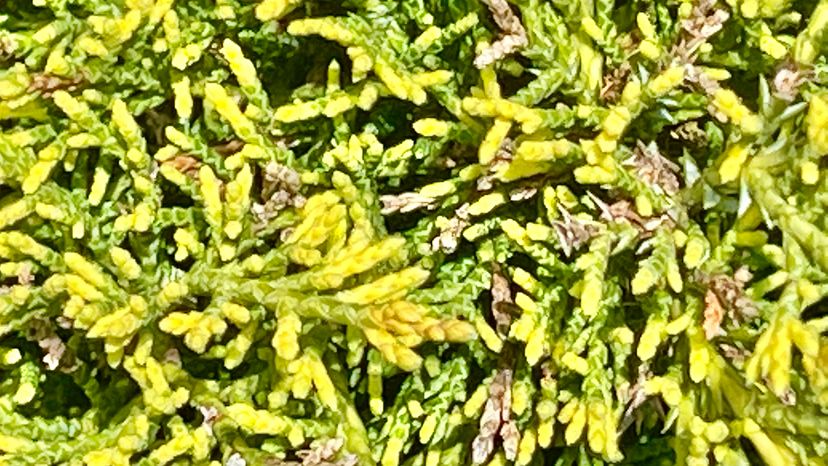
The Juniperus genus includes many species of evergreen trees and shrubs. Some are low-growing and used as ground covers. Leaves are scalelike and may be dark green, yellow-green, or blue-green.
Description of creeping juniper: Creeping juniper is a prostrate shrub with wide-spreading branches and grows to 24 inches high. The leaves are scalelike and bluish green, turning purple in winter. The flowers are inconspicuous, and female plants produce small, round, blue-green berries. Use junipers in full sun where low maintenance is desired. Junipers withstand hot, dry situations in the landscape.
Advertisement
Growing creeping juniper: Plant junipers in full sun in well-drained, dry soil. They are tolerant of heavy and slightly alkaline soil. Fertilize in early spring with a well-balanced, complete fertilizer.
Propagating creeping juniper: Start plants from stem cuttings in late spring. Grow rooted plants in containers or propagation beds until they're big enough to place in the landscape. Plant on four- to five-foot centers for a massed ground cover.
Creeping juniper related varieties: Bar Harbor grows to 12 inches high with a 6- to 8-foot spread. Leaves are bluish green, turning purple in winter. Blue Chip grows 8 to 10 inches high and holds an excellent blue color throughout the year. Plumosa grows 18 to 24 inches high, spreading up to 10 feet; its gray-green leaves turn purple in winter. Wiltoni (Blue Rug) grows to 6 inches high with silver-blue foliage.
: Juniperus horizontalis
Advertisement